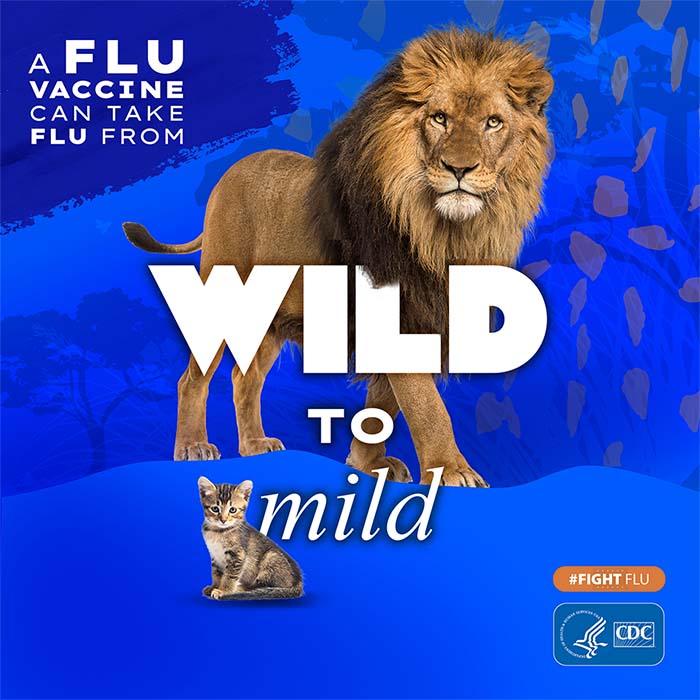Additional H7N9 Cases Reported in China; CDC Receives H7N9 Virus Isolate
April 12, 2013 – China has now reported a total of 43 cases of human infection with the new avian influenza A (H7N9) virus; 11 of which have resulted in death. While there are no reported cases of H7N9 in the United States or anywhere else outside of China, the Centers for Disease Control and Prevention (CDC) is taking standard pandemic preparedness precautions, including beginning to develop a candidate vaccine virus to produce an H7N9 vaccine should it become necessary. On Thursday April 11, CDC received the first H7N9 virus isolate from China, which will support this process.
While CDC had begun work on some preparedness measures based on the genetic sequences of the first three H7N9 viruses posted by China, the arrival of the actual isolate from China will allow this work to expand.
The virus isolate will be used to:
- Continue to develop and evaluate a candidate vaccine virus against H7N9.
- Further evaluate the CDC diagnostic test kit for detecting H7N9 infections in humans and make adjustments if needed.
- Develop a serologic assay to test for the presence of antibodies against the H7N9 virus in human blood samples. This will allow CDC to conduct studies to determine whether there is any pre-existing immune protection against this virus in the human population.
- Grow the virus and share it within the World Health Organization’s (WHO) system with laboratories with proper USDA permits and biosafety containment for preparedness activities.
- Conduct additional testing to determine the susceptibility of the H7N9 virus to existing antiviral drugs.
The first human infections with H7N9 were reported by the Chinese National Health and Family Planning Commission to WHO at the end of March. A few of the infected people in China have had mild illness, but most of illness associated with these infections has been severe so far.
Since this H7N9 virus is a novel influenza virus with pandemic potential, the situation in China is being carefully investigated. After the first human infections with H7N9 were detected, Chinese authorities detected H7N9 viruses in poultry in the same area where human infections have occurred. The extent of the avian outbreak in poultry is still being assessed; but China has reportedly begun culling birds in live markets.
Many of the human cases of H7N9 are reported to have had contact with poultry; however, some cases reportedly have not had such contact. China is conducting follow-up investigations among close contacts of people infected with H7N9 to try to assess whether human-to-human spread of this virus is occurring. These investigations suggest that there is no sustained (ongoing) spread of this virus from person to person at this time.
Human infections with avian influenza viruses are rare and most often occur after people are in contact with an infected bird. However, non-sustained person-to-person spread of other avian influenza viruses is thought to have occurred in the past, most notably with H5N1 viruses.
For example:
- In 1997, when the H5N1 virus first emerged there was evidence of limited transmission of H5N1 virus to health care workers and household contacts of H5N1 patients in Hong Kong, but the virus did not spread further.
- In 2004, in Thailand, there was evidence of probable human-to-human spread in a family cluster. Transmission was associated with prolonged very close contact between an ill child and her mother and her aunt. Transmission did not spread beyond one person. (Ungchusak et al, 2005. “Probable Person-to-Person Transmission of Avian Influenza A (H5N1).”)
- In 2005, in Indonesia, limited person-to-person H5N1 transmission could not be excluded in two clusters among patients who had no known contact with poultry or other animals. (Kandun et al, 2006. “Three Indonesian Clusters of H5N1 Virus Infection in 2005.”)
- In December 2007, limited, unsustained spread is thought to have occurred between a sick son and his father. (Wang et al, 2008. “Probable limited person-to-person transmission of highly pathogenic avian influenza A (H5N1) virus in China.”)
- Also in 2007, evidence gathered during an outbreak investigation in Pakistan supports the theory of initial transmission from poultry to humans followed by human-to-human transmission involving a third generation. (WHO, Weekly Epidemiological Record, 2008. “Human cases of avian influenza A(H5N1) in North-West Frontier Province, Pakistan, October–November 2007
Based on this previous experience, it’s likely that some limited human-to-human spread of this H7N9 virus will be detected.
Human-to-human transmission ranges along a continuum; from occasional, “dead-end” human-to-human transmission, to efficient and sustained human-to-human transmission. “Dead end” transmission usually refers to when a virus from an animal host infects a person and then there is some subsequent transmission that eventually burns out. Efficient and sustained (ongoing) transmission in the community is needed for an influenza pandemic to begin. There is no evidence that the H7N9 virus in China is spreading in a sustained, ongoing way at this time.
However, the concern is that this H7N9 virus might either change and adapt to allow efficient transmission during the infection of mammals or reassort its gene segments with human influenza viruses during the co-infection of a single host, resulting in a new virus that would be transmissible from person to person. Such events are believed to have preceded the influenza pandemics of 1918, 1957, and 1968.
The investigation is ongoing and CDC will provide more information as it becomes available.
At this time, other than advice for travelers or ill persons, CDC is not making any additional or special recommendations for U.S. public action specific to H7N9.
Travelers should continue to visit CDC Travelers’ Health for up-to-date information about CDC’s travel recommendations.
CDC will provide updated information as it becomes available.
